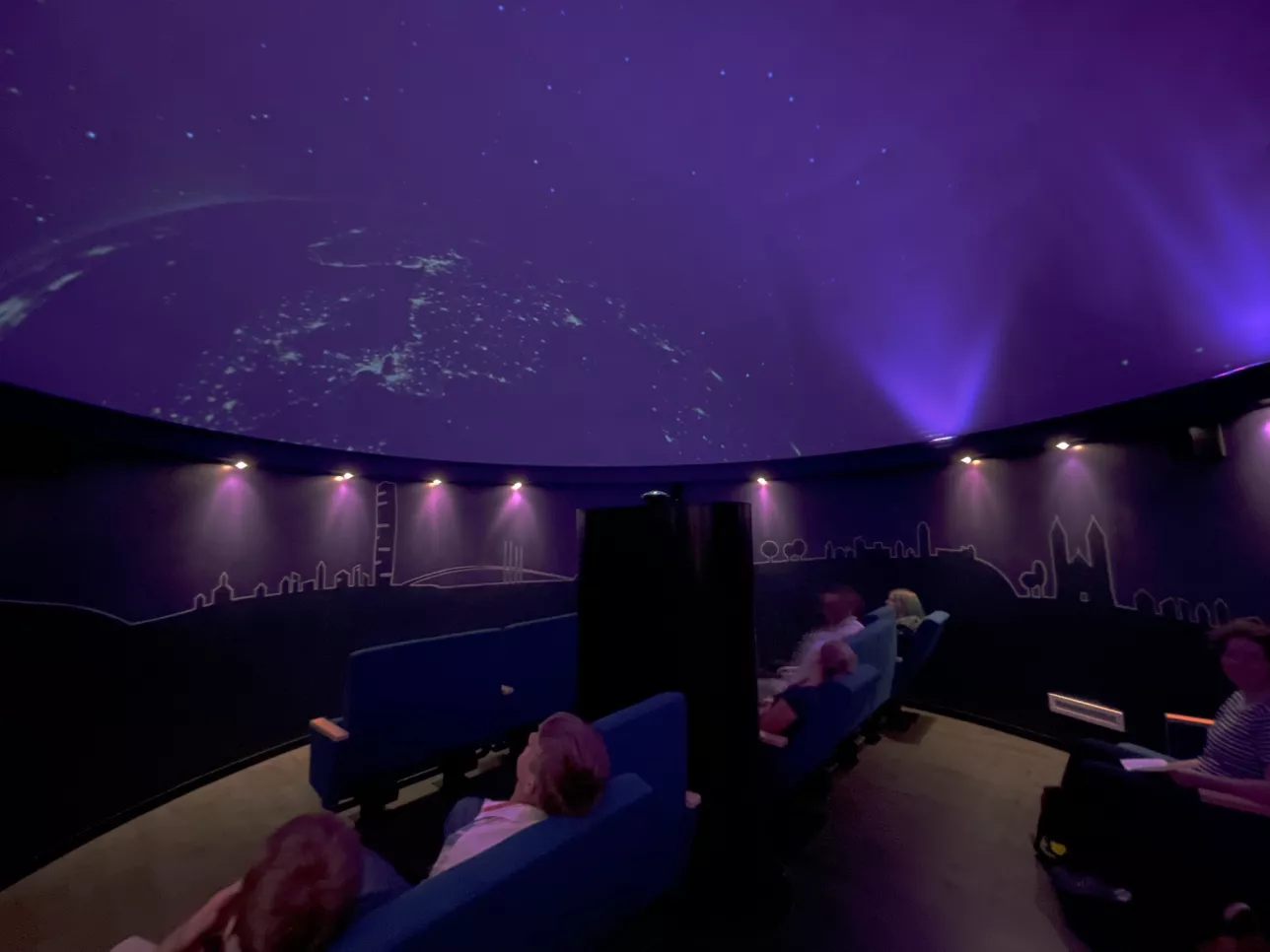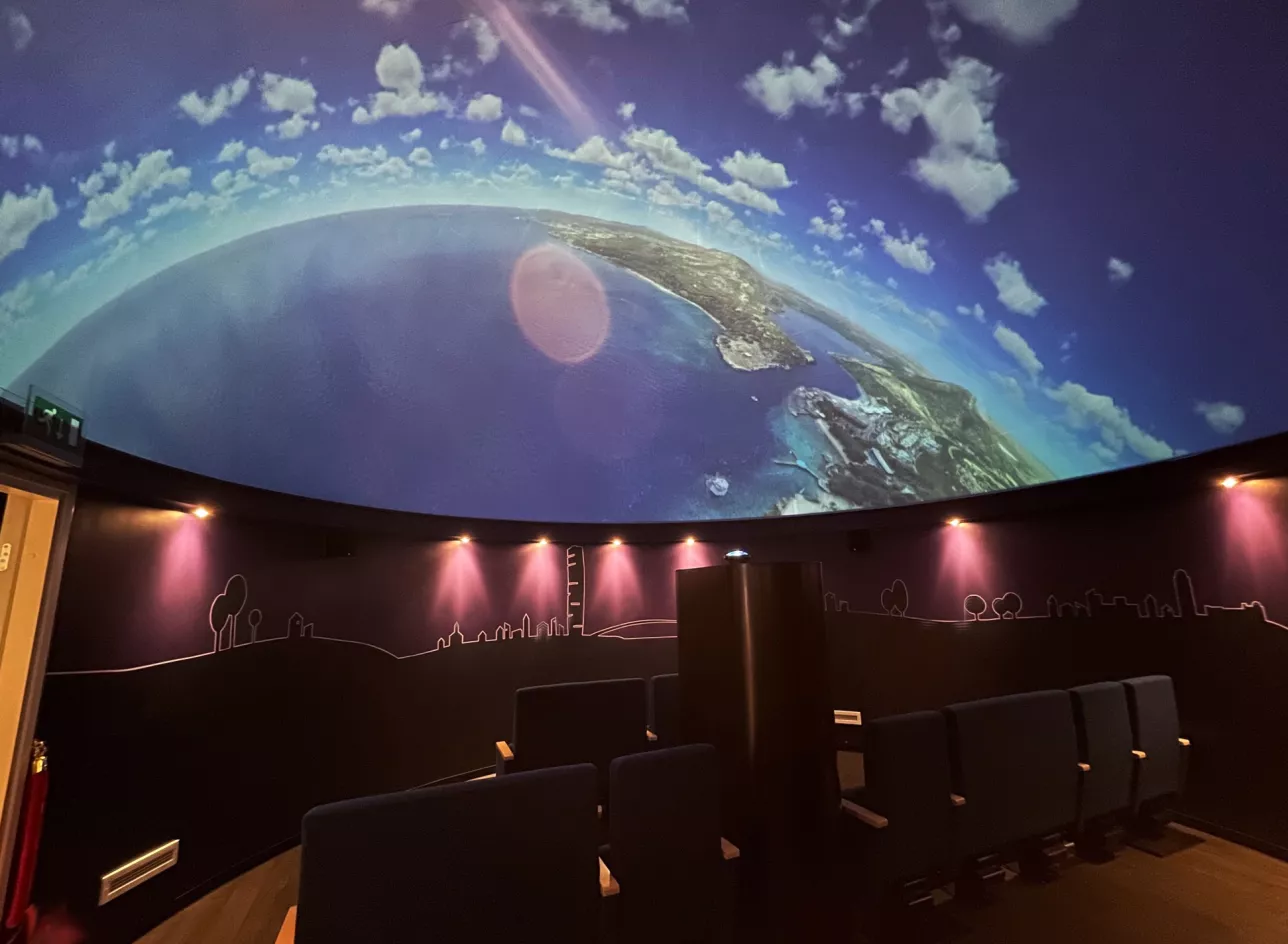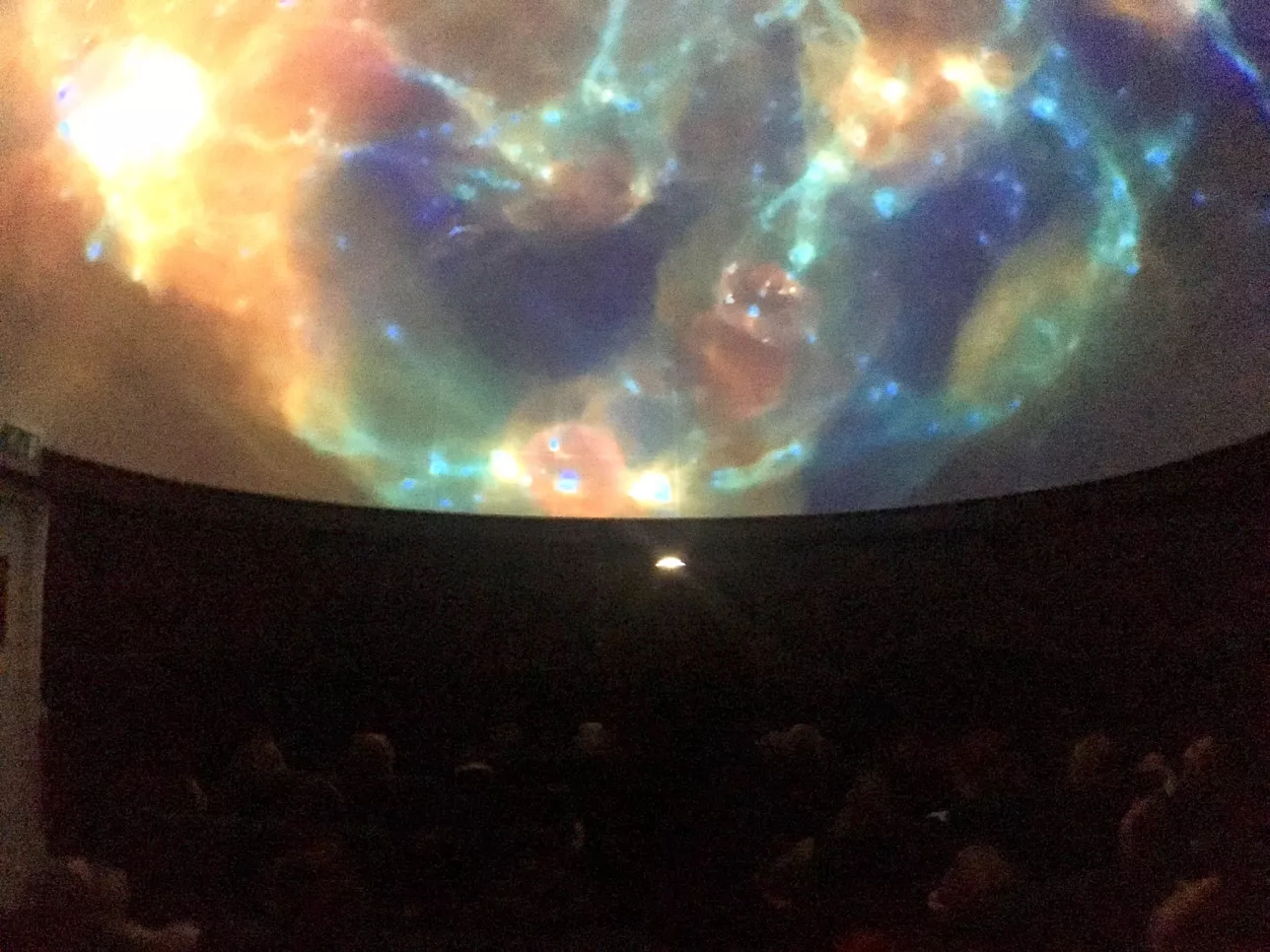The Planetarium
The Division of Astrophysics owns and operates a planetarium, which is located at the university science center; Vattenhallen. There our astronomers give shows and lectures to the public and to school groups. We also host teacher education courses and give some of our university course lectures at the planetarium.
The Lund University Planetarium is open to the public on weekends and during school holidays. At other times groups are welcome to book a visit by contacting the reception at Vattenhallen Science Center. Please visit the science center website for more information.

The Lund University Planetarium dates back to 1978, when Lund Observatory acquired an optomechanical planetarium projector from GOTO. Under the planetarium dome (6m) one could marvel at the starry night sky, observe the current location of planets and demonstrate the daily and yearly motion of the sky.
When the Observatory moved to Sölvegatan in 2001, the planetarium moved with it and was for a time placed in the town's old water tower. The planetarium moved again in 2010, and is now situated in the University's Science Center: Vattenhallen.
The GOTO starball retired in 2012 and was replaced with a fully digital installation from Sky-Skan Europe. We are no longer limited to the surface of the Earth. With an array of computers with powerful graphics cards simulating the Universe for us we can now travel to planets, stars and galaxies, view the night sky at several different wavelengths, land on exoplanets or show informative natural science films on the dome.



